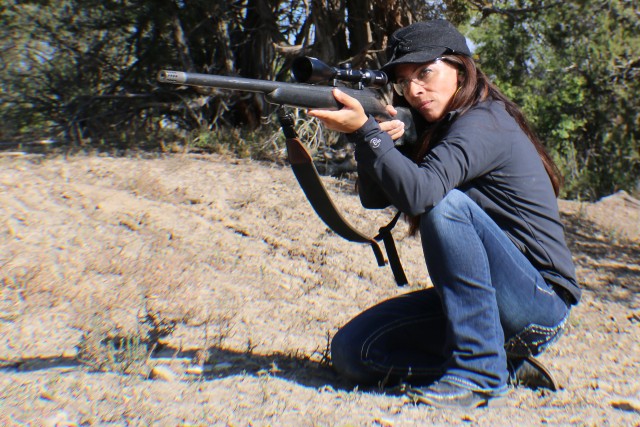Mia Anstine gives you the run-down on essentials in our Hunting 101 series, which features essentials before the shot and why you must be ready for a follow-up shot.
We head out to the mountains, fields and stands for our favorite season: Hunting! As we head out the door, we have hopes of successful harvests. Before the hunt, we apply for licenses, train, practice and scout, all in an effort to fill our tags—and, ultimately, our freezers.
Are you doing all these things? Training? Practicing? Scouting?
I’m going to touch on a situation that pretty much goes un-talked-about in the hunting community. It’s not a bad thing, because after all, we want to be good representatives to those who don’t quite understand hunting.
Sight In
As ethical sportsmen, we desire the perfect shot on an animal. That’s why we practice. When you practice, are you simply zeroing your rifle, or are you taking the time to think about real-life, in-the-field scenarios?
One cause for a hunter to have a poor shot is lack of practice. In hunter education, they teach us the 4 basic shooting positions, but it seems that despite that instruction, many people go to the range, sit at the bench and sight in. It’s not often that you find a shooting bench and stool while you’re on a hunt. When you head to the range, do more than just sight in your rifle.

Practice all the shooting positions and getting into them as quickly and quietly as possible. (Lea Leggitt photo)
Practice Shooting Positions
First and foremost, Always remember the rules of shooting safety.
Scenario Rehearsal
As a guide I often act as a shooter’s conscience, talking a hunter through the shot. If you’re hunting alone, you may not have the luxury of a non-shooter to help you through intense situations. This is why you should practice hunting scenarios before you hunt while you’re at the range.
Here’s an example of what I, as a hunter’s conscience, say as I talk an anxious hunter through her shot.
In a calm voice, I whisper, “There he is. Kneel down behind the brush. Relax. Use the log as a rest. Take your time. He’s at 225 yards. Wait for him to turn. Relax. He’s at 230. Can you see him? Don’t shoot. There’s a cow walking out behind him. Wait. Breathe. OK. She’s clear. He’s at 220. When you feel comfortable, he’s yours.”
When I’m talking through the shot I’m attempting to calm the shooter. You need to learn to calm yourself. Learn to breathe and lower your heart rate. Always look at your target and beyond, even on the follow-through.
Finish Your Shot (Follow-Through)
Follow-through begins with knowing the action of your rifle. If it’s a bolt-action, quickly lift and jerk the bolt back then slam it forward, chambering another round. Regardless of your rifle’s action, learn to rapidly reacquire your target, scan for obstacles and prepare to shoot again. This is very important in case your first shot wasn’t good. If you can, keep your cheek on the stock.
Practice good habits at the range. They’ll show when you’re in an intense situation in the field.
The Women's Outdoor News, aka The WON, features news, reviews and stories about women who are shooting, hunting, fishing and actively engaging in outdoor adventure. This publication is for women, by women. View all posts by The WON